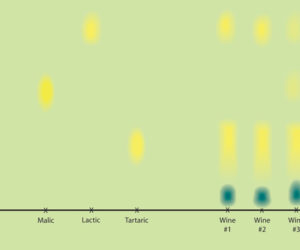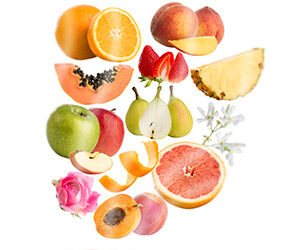Barrel tests
Q
Can you tell me what I really need to handle one to one and a half barrels of juice annually? The TA and pH kits that I have seen are quite unreliable.
David Stollmeyer
Glen Ellen, California

A
I’m not a fan of the pH and TA kits available out there either. pH test strips are pointless as they don’t spit out an actual number and the TA test kits don’t work well for red wine because you can’t see the color endpoint. I’m also not a fan of spending hundreds of dollars on equipment and reagents that you may only really use once a year, not to mention get a college chemistry degree and some serious training to learn how to use
So what’s a well-meaning home winemaker to do? Let the professionals do it! Especially as you live in Sonoma County, California (AKA Wine Country Central) you are better located than most to let your friendly neighborhood wine lab take care of you. Since you are only doing one or two barrels of wine, I would rely on a lab like Vinquiry, who have branches in Windsor and Napa, Gusmer Enterprises or ETS Laboratory to run your juice stats and final wine numbers.
Now, of course, you could spend many hundreds of dollars with these labs too, depending on how much of a number-junkie you are. For the one or two-barrel winemaker, I recommend the following minimum analysis schedule:
Initial Juice/Must stage: Brix, pH
Fermentation stage: Daily brix and temperature, glucose/fructose towards the end (OK to use clinitest tablet method as long as the wine goes dry- if not, send in a sample to a lab).
Newly dry wine: Malate/malic acid (to monitor Malo-lactic fermentation if you are going to take your wine through MLF)
Post MLF (if done) or when wine is sulfured: pH, Free SO2
Aging: Free SO2 every 2 months
Pre-bottling: Free SO2
That list is not to say that all other analyses and benchmark numbers for your wine are unimportant — they’re just what I would put on my “if I had to make wine on a desert island” list. pH should also be rechecked every time after you make an acid adjustment. Free SO2 is so critical because your wine will chew through it over time, binding up the free sulfur dioxide molecules (the ones that have the anti-microbial properties). You need to maintain a minimal level during wine aging, say 25–35 ppm depending on pH (higher pH’s need higher SO2 numbers).
The reason I say pH and not pH/TA is that pH is the more important number for microbial stability, whereas TA is more of a taste profile number, and with experience, can be estimated.
In order to budget to do the above at home, plan on buying the following:
Hydrometers ($30 each)
Thermometer ($20)
pH meter, electrode and standardizing reagents ($800)
Clinitest Tablets and color translation chart ($25)
Chromatography kit for MLF fermentation monitoring ($80)
Aeration/Oxidation apparatus for Free SO2 ($350)
Misc Glassware-Labware: beakers, pipets, rinse bottles, etc ($100)
Grand Total: $1405.0
I also recommend a digital balance (~$350) that reads down to 0.01 g for bench trials and small additions.
On the other hand, if you wanted to pay for the above analysis to be done (aside from daily brix and temperature, which you should do yourself anyway), it would probably cost you around $200. Big difference. That being said, however, once the equipment is yours, it’s yours, and you can use it on as many different lots as you want, whenever you want. Lab costs add up either way you slice it, it’s just about how much time, effort and money you have available to invest.
Choosing yeast
Q
I am new to the art of winemaking and have come to realize that there are many varieties of yeast available. I make mostly sweet fruit wines such as strawberry, watermelon, peach, etc. and was wondering what the best yeast might be for these types of wine.
Josh Hemmendinger
Park Hills, Missouri

A
You want to know what my standard, go-to, never-fail, keeps-most-wines-happy yeast is? It’s called Prise de Mousse, EC1118, Davis 796 or Premier Cuvee. Why all the names? I guess so a lot of different companies can sell it to appreciative winemakers like me. Whatever you call it or buy it as, make sure it’s fresh (never more than a year old), has never been opened and that you buy it in packets that are sized appropriately for the lots of wine you make. Once you open the packet, store it in a cool, dry, dark place and use it within two months. By the way, these rules apply to all dry yeast.
Prise de Mousse is an isolated strain of Saccharomyces bayanus and is known in the winemaking community as a workhorse yeast, i.e. it ferments cleanly, efficiently and with minimal problems. I call it my “no headaches” yeast as I can count on it finishing ferments, with no “stuckies,” year after year. It is an aromatically neutral fermenter, which, given your propensity for fruit wines, would be a good choice as it won’t muddle your fruit flavors and aromas with funky smells of its own.
One funky smell that you may notice, however, is hydrogen sulfide (rotten eggs). Though Prise de Mousse isn’t particularly finicky in the nutrition department, if you don’t dose it with some yeast food (I like to add Superfood and a little DAP, but read manufacturer’s recommended dosage) you could end up with a yeast that can’t get the nutrients it needs from your juice or must. Fruit winemakers, especially, must be sensitive to the nutritional needs of their microorganisms because, unlike wine grapes, most other non-grape fermentation material will lack critical amino acids, nitrogen sources, proteins, etc. Yeast foods go a long way towards making up for these deficiencies, but with non-grape wines, err on the higher side of the recommended dose.
UC-Davis graduate and professional winemaker Alison Crowe has been answering hundreds of your winemaking questions as the “Wine Wizard” since 1998. Her Wizard columns have been collected in The Winemaker’s Answer Book which is available at winemakermagstore.com.
Do you have a question for her? Send your inquiries to: [email protected]. Unfortunately, Alison cannot respond personally.







